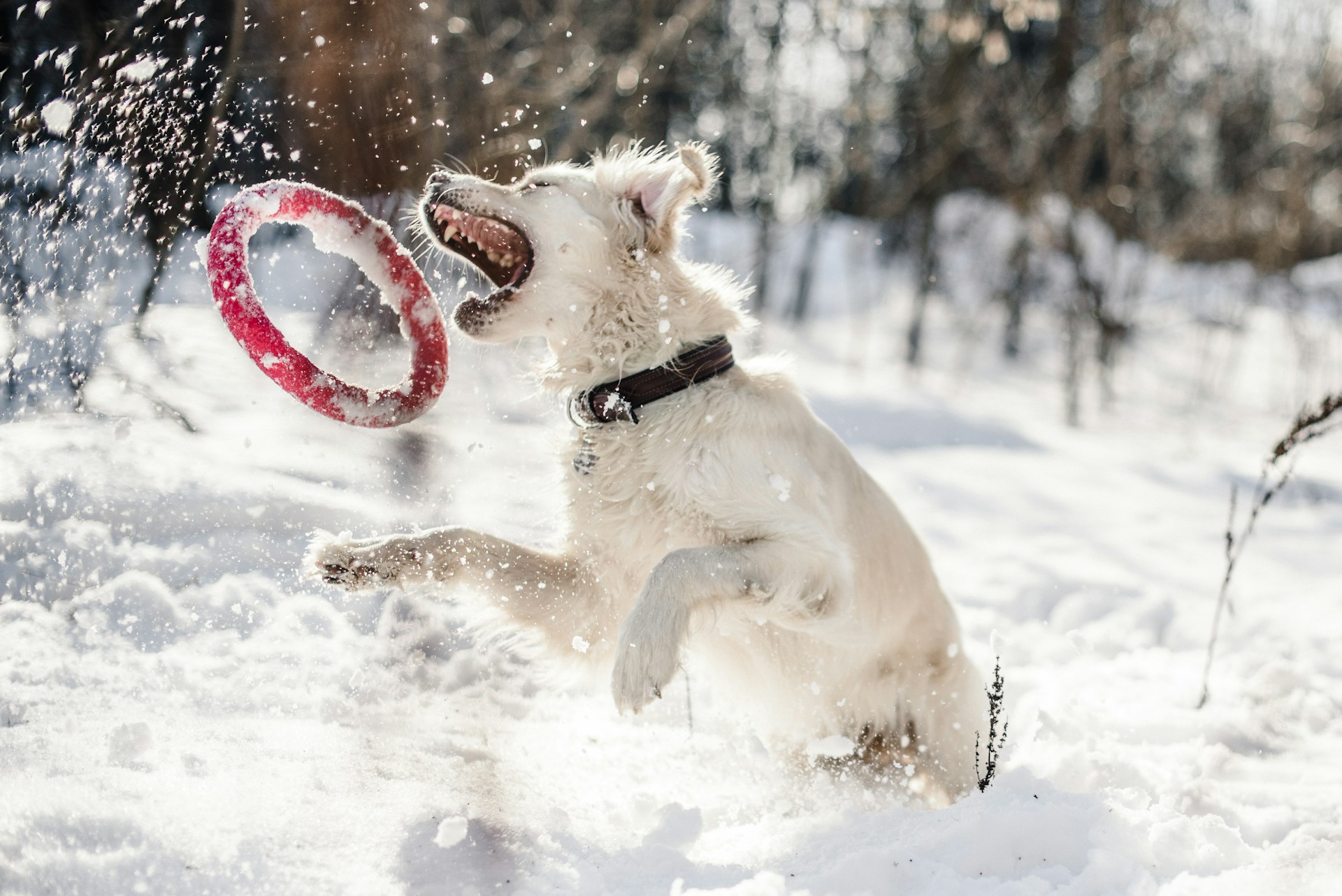Blog Post
Frostbite in Dogs

Photo Credit: Anastasia Ulyanova
What is Frostbite in Dogs?
Frostbite is a type of skin trauma that occurs when a dog has been exposed to below-freezing temperatures for an extended period of time. When exposed to these temperatures, the smaller blood vessels in your dog’s extremities constrict in order to keep blood closer to the core of the body. By doing so, the warmth from within your dog’s body is less likely to dissipate.
If the restriction in blood flow to the extremities is prolonged, tissue damage can occur. The ears, nose, tail, and paws are all parts that make up your dog’s distal extremities. For male dogs, the penis and testicles may also be at risk. Dogs with health conditions that decrease blood flow such as diabetes and heart disease are more susceptible to frostbite. Senior dogs, very young puppies, and dogs with short or wet fur are also more susceptible to frostbite.
Symptoms of Frostbite in Dogs
The most obvious sign of frostbite is that the area of skin feels very cold to the touch. The skin can appear discolored like a blue or a black color, and areas like the ears and tail tip can feel brittle or dry. As blood flow returns to frostbitten areas, the skin may appear very red and inflamed. Blisters and necrotic skin can develop in extreme cases, and the skin can be painful when touched.
Without treatment, frostbitten areas can continue to be a source of pain for your pup. Necrotic tissue can slough and fall off, and these areas can become infected. Frostbite is diagnosed when signs are consistent with a clinical history of prolonged exposure to frigid temperatures.
Treatment for Frostbite
If your dog has frostbite, make sure to contact your veterinarian right away so that they can examine the skin and determine if additional therapy is needed such as antibiotics and pain medications. Blood work can also be performed to look for signs of internal organ damage. When transport your dog to the vet’s office, you can wrap him in warm blankets and towels to bring his body temperature down. A good tip is to first put the towels in your dryer for a few minutes to warm them up.
If your dog is wet, carefully towel-dry him but do not rub the skin since it becomes red and painful as it thaws. You can use warm water bottles to help him if he has a low body temperature but avoid using electric blankets and heating pads because these can become too hot, burning the already traumatized skin. Blow dryers can also get too hot and should be avoided.
For minor frostbite patients, topical ointments can help with small areas. More generalized frostbite may require hospital care, warming devices, and injectable antibiotics and pain medications. For cases with severe frostbite and necrotic skin, surgical removal of the affected tissue is necessary. In some cases, this may mean amputation like if it happens at the tip of the tail.
When dogs go outside in the cold, sweaters and jackets can help keep their core body temperature maintained. For snowy or icy surfaces, dog booties or shoes can protect the paws. It is best to avoid staying outdoors for more than 20-30 minutes unless your dog is used to these kinds of ambient temperatures. If you normally keep your dog outdoors, make sure that he has a sufficiently warm shelter or keep him indoors when ambient temperatures drop below 40 degrees Fahrenheit.
Frostbite is a painful medical condition that can be mitigated with early intervention and prevention. Be sure to pay attention to the temperatures outdoors, especially if your pup is going to be outside for more than thirty minutes at a time. If you suspect that your dog has frostbite, try to warm him up as best as you can and take him to his veterinarian right away.